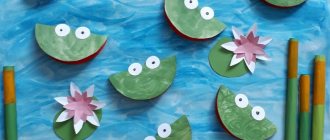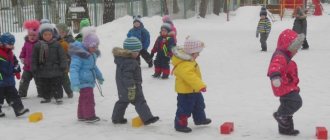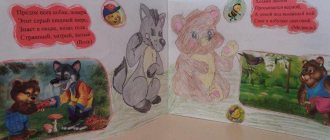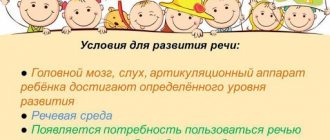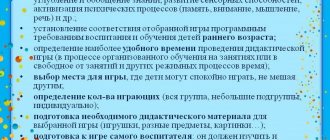Conducting physical education lessons in mathematics lessons in high school
Currently, teachers in our country pay special attention to studying the influence of conditions and factors of school life on children’s health.
Children's health is a common problem for doctors, teachers and parents. And the solution to this problem depends on the use of health-saving technologies in the educational process. Health-saving educational technologies in the broad sense of the word should be understood as all those technologies, the use of which benefits the health of students.
The goal of health-saving educational technologies is to provide the student with the opportunity to maintain health during the period of study at school, to develop in him the necessary knowledge, skills and abilities for a healthy lifestyle, and to teach him to use the acquired knowledge in everyday life.
Every teacher faces an important task - organizing educational activities taking into account health conservation. The main components here are:
— determination of the dosage of the educational load in accordance with the age characteristics of students,
- conducting a lesson taking into account the performance of children,
— compliance with hygienic requirements: cleanliness of the office, good lighting, ventilation, optimal thermal conditions,
- a favorable emotional mood in each lesson and the relationship between students and the teacher, in general,
— conducting physical education minutes and dynamic breaks in lessons.
In our article we will pay attention to the issues of conducting physical education minutes and dynamic breaks in mathematics lessons in high school. It is known that sitting in class for 45 minutes is quite difficult not only for an elementary school student, but also for a high school student, especially in mathematics lessons. Mathematics is not easy for all students - it is one of the most difficult subjects in the school curriculum, the study of which requires constant attention and active work. That is why physical education sessions should solve the following problems:
— activating students’ attention and increasing the ability to perceive educational material,
- emotional relief for children, the opportunity to “shed” the accumulated burden of negative emotions and experiences.
The proposed exercises for physical education are directly woven into the topics of mathematics lessons. So, for example, when studying positive and negative numbers, students, having become familiar with the definitions and having initially consolidated the material, can perform the following exercise during physical education to check their understanding: students stand up, hands on their waists; task: if the teacher calls a positive number, students tilt (or turn) to the right; if negative – to the left.
To develop students’ imagination, we offer the “Pinocchio” exercise. For example, after introducing the new concept of parallel lines and pronouncing this term, students are asked to close their eyes and imagine that their nose is as long as Pinocchio’s. You can suggest dipping it, as in a fairy tale, in ink and writing this new term as beautifully as possible with your nose in the air; this can only be done mentally or with a movement of the head; fix the written word before your eyes, remember it.
It is important to include preventive exercises for the eyes in physical education. For example, an exercise for the eyes - “Coloring”. The teacher invites the children to close their eyes and imagine geometric shapes in front of them. You need to mentally color them one by one with any color: for example, first yellow, then orange, green, blue, but you need to finish coloring with your favorite color.
The simplest exercises for the eyes should also be included in physical education, since they not only serve as a preventive measure for visual impairment, but are also beneficial for neuroses, hypertension, and increased intracranial pressure. They can be correlated with topics studied in mathematics lessons. Let's highlight the following exercises:
1) eye movements up and down, left and right – “Coordinate plane”, “Reduction formulas”;
2) rotation of the eyes clockwise and counterclockwise – “Circle”, “Rotate a point around the origin”;
3) on the board before the start of the lesson, draw some kind of curve (spiral, circle, broken line); it is proposed to “draw” these figures with your eyes several times in one and then in another direction;
4) close your eyes and imagine the colors of the rainbow one by one as clearly as possible.
Exercises for the eyes using geometric shapes located on the wall of the classroom are carried out with the aim of expanding visual activity and relieving fatigue in the lesson. Various colored shapes are depicted on a piece of whatman paper (square, circle, rhombus, etc.), cut out and placed on wall in the office. During physical education, the task is given to sequentially move the gaze from one figure to another (independently) or according to the name of the figure (color) by the teacher. The exercise can be performed sitting or standing.
Exercises: “8”, “infinity sign”, “geometric exercises” are also carried out to relieve visual tension.
Task 1: use your eye movements to draw the number 8 on the board.
Task 2: use your eye movements to draw an infinity sign on the board. ∞.
Exercise “Numerical tables”. Goal: development of mental tempo of perception, in particular the speed of visual orienting-search movements. The table is a square divided into several cells with numbers from 1 to 25 written in disorder in the cells. When working with them, you need to concentrate your gaze in the center of the table, see it as a whole and find all the visible numbers in increasing order of counting.
| 15 | 6 | 16 | 9 | 14 |
| 1 | 8 | 20 | 24 | 2 |
| 18 | 22 | 10 | 21 | 12 |
| 17 | 11 | 23 | 5 | 25 |
| 7 | 4 | 13 | 19 | 3 |
Relaxation exercises are also interesting for high school children. For example, the “Dropping Your Arms” exercise relaxes the muscles of the entire core. Children raise their arms to the sides and lean forward slightly. On command, teachers relieve tension in the back, neck and shoulders. The body, head and arms fall down, the knees bend slightly. Then the children straighten up, sequentially unbending in the hip, lumbar and shoulder girdles, and take their starting position. The exercise can be repeated several times.
It is important to teach children to take care of correct body position, coordination of movements, and the correct combination of movements with breathing. This is helped by exercises for the formation of correct posture (“Up hand and down hand”, “True-false”). For this exercise, you can take tasks from the “Analysis of Geometric Statements” block in preparation for the final certification in the 9th grade.
Exercise. Please indicate the correct statements:
1) If two angles of one triangle are equal to two angles of another triangle, then such triangles are similar.
2) Vertical angles are equal.
3) Any bisector of an isosceles triangle is its median.
When performing this exercise, if the answer is correct, the right hand rises while inhaling, and if the answer is incorrect, the left hand rises. You can first raise one hand up, then lower it, then do exercises for the other hand.
In the given examples of physical education exercises for high school students, only some of the teacher’s opportunities for organizing health conservation in mathematics lessons are considered. Organizing educational activities using health-saving technologies will provide the most comfortable conditions for each student, and therefore minimize negative factors that could harm his health.
Literature:
- Bakhtin, Yu.K. From the experience of medical and valeological education of students of a pedagogical university / Yu.K. Bakhtin, L.G. Buynov, L.P. Makarova, N.N. Plakhov // Young scientist. 2015. No. 6 (86). pp. 569-575.
- Bakhtin, Yu.K. Prevalence of alcohol consumption and tobacco smoking among students of a pedagogical university // Yu.K. Bakhtin, D.V. Sukhorukov, L.A. Sorokina // Young scientist. 2014. No. 14. P. 267-270
- Boykov, A.E. Life safety as an optimal school subject for the implementation of pedagogical prevention of information dependence of children and adolescents // A.E. Boykov // Higher school pedagogy. 2015. No. 3-1 (3). pp. 22-24.
- Novikov, V.S. Psychophysiological assessment of acute physical fatigue / V.S. Novikov, A.A. Blaginin, E.B. Shustov, V.Yu. Cheprasov, M.Yu. Bakhtin, V.O. Gumenyuk // Human physiology. 1995. No. 2. P. 37.
- Soloviev, A.V. Features of the response of the hypothalamic-pituitary-adrenal system in people with different resistance to alternating accelerations / A.V. Soloviev, L.G. Buynov, L.A. Sorokina // Russian otorhinolaryngology. 2014. No. 6. P. 82-85.
- Soloviev, A.V. The role of psychophysiological adaptation of a person in the professional selection of persons subject to Coriolis accelerations / A.V. Soloviev, L.G. Buynov, L.A. Sorokina // Russian otorhinolaryngology. 2014. No. 5 (72). pp. 67-73.
- Sorokina, L.A. Pedagogical model of a point-rating system for assessing the health of students / L.A. Sorokina // Pedagogical measurements. 2014. No. 1. P. 38-46.
- Sorokina, L.A. Practice of increasing the effectiveness of the learning process using pharmacological drugs / L.A. Sorokin // News of the Russian State Pedagogical University. A.I. Herzen. 2015. No. 178. pp. 157-160.
- Sorokina, L.A. Problems and prospects of interaction between the educational environment and its subjects / L.A. Sorokina // Alma mater (Bulletin of Higher School). 2014. No. 5. P. 114-116.
- Syromyatnikova L.I. Pedagogical approach to medical and valeological education of future life safety specialists / L.I. Syromyatnikova, L.P. Makarova, L.G. Buynov // In the collection: Science and education in the life of modern society, a collection of scientific papers based on the materials of the International Scientific and Practical Conference: in 18 parts. 2013. pp. 157-159.
Report “Physical education in preschool educational institutions and its significance”
Physical education in preschool educational institutions and its significance
Recently, health-saving technologies have been increasingly used in kindergartens. One of the directions of these technologies is the use in preschool institutions of methods to activate muscle tone and motor-coordinating systems. Physical education, as a form of active recreation during sedentary activities, is widely used with preschool children.
Physical education is physical exercise aimed at restoring children’s performance, improving their well-being, increasing attention, preventing fatigue, posture disorders, i.e. to improve the health of children's bodies. Complexes are exercises composed of different movements aimed at actively working various muscle groups and relaxing them; activation of attention, increased excitability of the nervous system, formation and strengthening of posture, as well as breathing. In addition to physical exercises, the complexes may include elements of massage, finger and breathing exercises, and eye exercises.
The purpose of a physical education session (dynamic pause) is to increase or maintain mental performance during direct educational activities, prevent fatigue, and provide short-term active rest for children when the organs of vision and hearing experience significant stress; muscles of the trunk, especially the back, which are in a static state; muscles of the working hand.
Physical education allows educators and teachers, as well as parents, to play with children, make them happy and, at the same time, develop speech, coordination and fine motor skills. In the process of performing physical exercises, blood circulation improves, areas of the cerebral cortex that were not involved in previous activity are excited, and those that did are inhibited. In this regard, fatigue of the muscles and nervous system is relieved, and children experience positive emotions and improve their mood.
Raising children to be physically perfect means ensuring that they are healthy and hardened from an early age.
To solve problems and improve the health of preschool children, various means of physical education are used, including physical education sessions. The integrated use of all means (hygienic factors, natural forces, physical exercise and others) effectively affects the child’s body.
Physical education is a small set of physical exercises performed for 2-3 minutes during classes in kindergarten, as well as at home when doing homework. It is built from 4-5 exercises for the arms, torso, and legs that do not require complex coordination.

